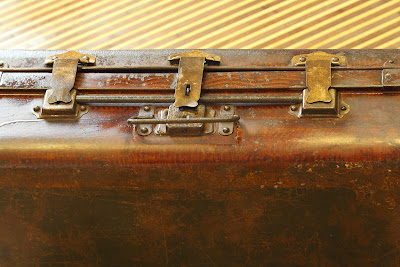Arresting examples of a thermal undergarment from the 18th-19th centuries. Fashioned from cut sections of the finest bamboo and strung together with cotton threading. Bamboo coats and vests were conceived to protect an over layer garment from body oils and to be worn as insulation between layers of garments. The network of bamboo creating an air pocket that trapped body heat in the winter and permitted air circulation in the warmer months.
Bamboo garments in good condition with original trims and ties are rare and date back to the Ming dynasty (1368-1644) and were worn until the beginning of 20th century in China, particularly in Southern China. Although primarily worn by court officials in the Qing Dynasty beneath elaborate silk robes and wedding costumes, these garments are also known to have been worn in Korea, Japan “ase tori” and the Southeast Asia Straits Chinese settlements, the Babas and Nyonyas from Malaysia and Singapore under their elaborate and costly Qing-style wedding costumes for similar reasons.
Pictures below showing the bamboo vest from my collection. It was constructed of very small bamboo pieces and the edges of the garment are bound with a thin band of linen fabric and there is a decorative double border of large spaces around the lower part of the vest. This extraordinary vest is made of many hundreds of tiny tubular bamboo segments, each precisely cut and held in place with cotton thread that has been passed through the centre of each segment to construct the overall garment.
Again, vests such as these are rare. One is in the collection of the National Museum of Singapore and another is on display in the Chan's House in Malacca, Malaysia, now the Baba Nyonya Heritage Museum.
Length of each bamboo pieces : 0.5cm.
Bamboo garments in good condition with original trims and ties are rare and date back to the Ming dynasty (1368-1644) and were worn until the beginning of 20th century in China, particularly in Southern China. Although primarily worn by court officials in the Qing Dynasty beneath elaborate silk robes and wedding costumes, these garments are also known to have been worn in Korea, Japan “ase tori” and the Southeast Asia Straits Chinese settlements, the Babas and Nyonyas from Malaysia and Singapore under their elaborate and costly Qing-style wedding costumes for similar reasons.
Pictures below showing the bamboo vest from my collection. It was constructed of very small bamboo pieces and the edges of the garment are bound with a thin band of linen fabric and there is a decorative double border of large spaces around the lower part of the vest. This extraordinary vest is made of many hundreds of tiny tubular bamboo segments, each precisely cut and held in place with cotton thread that has been passed through the centre of each segment to construct the overall garment.
Again, vests such as these are rare. One is in the collection of the National Museum of Singapore and another is on display in the Chan's House in Malacca, Malaysia, now the Baba Nyonya Heritage Museum.
Length of each bamboo pieces : 0.5cm.











